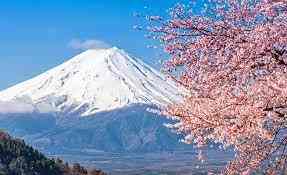According to the latest updates, Japan is set to enforce restrictions on Mount Fuji Safety measures, introducing both a toll and a daily limit on the number of individuals allowed on the iconic mountain.
Facing challenges such as strained facilities, increased injuries, and heightened concerns about litter, the Yamanashi prefectural government is taking decisive action to address these issues on the popular Yoshida Trail.
Beginning July 1, at the start of the 70-day summer climbing season, the government will implement a toll and cap the number of climbers at 4,000 per day.
In a December 20 conference, Governor Kotaro Nagasaki outlined additional regulations, including restrictions on starting the trail between 4 PM and 2 AM. The toll aims to contribute to route maintenance and shelter construction in case of a volcanic eruption, with the cost to be determined in February.
Support for these measures has come from environmental preservation groups and guiding organizations dedicated to Mount Fuji Safety measures. Tatsuo Nanai, secretary general of the Fuji-san Club, acknowledged the positive and negative aspects of the decision. While recognizing potential impacts on the local economy, he emphasized the urgent need to address litter issues and insufficient facilities.
Beyond environmental concerns, safety is a paramount issue on Mount Fuji, with climbers facing oxygen deprivation and altitude sickness at the highest peak in Japan. Unprepared climbers often encounter danger in harsh conditions, including freezing temperatures and powerful winds, leading to fatalities, rockfalls, and injuries.
Authorities are particularly concerned about ‘bullet climbing,’ where climbers ascend through the night without resting at shelters, posing significant risks due to unpredictable weather and lack of shelter.
In the summer of 2023, 221,322 people climbed Mount Fuji, with 137,236 choosing the Yoshida Trail. The government focuses on this trail to alleviate congestion and enhance overall safety.
Luke Cummings, the joint owner of Fuji Mountain Guides, sees potential benefits in these Mount Fuji Safety measures and anticipates other prefectures overseeing alternative trails adopting similar systems. As Fuji continues attracting climbers, a balanced approach is crucial to preserve its natural beauty, ensure climber safety, and promote sustainable tourism practices.
The decision to implement Mount Fuji Safety measures is not without its critics. Local businesses fear a decline in tourism, particularly from day-trippers who might hesitate to pay the toll and navigate stricter scheduling. Some argue that restrictions could dampen the mountain’s unique, spontaneous appeal.
However, proponents counter that responsible tourism often requires limits. The influx of climbers has pushed infrastructure and resources to their breaking points, jeopardizing the mountain’s well-being and climber safety. By ensuring proper maintenance and fostering a culture of preparedness; restrictions can make the experience more enjoyable and safer for everyone.
Moreover, the cultural significance of Mount Fuji Safety measures transcends their popularity. It plays a vital role in Japanese identity, serving as an artistic muse and spiritual anchor. Implementing reasonable regulations signifies a commitment to protecting this national treasure for future generations to experience its majesty.
The debate surrounding Mount Fuji’s future presents a microcosm of the global challenge of balancing tourism with environmental and cultural preservation. Finding the right balance requires open dialogue, stakeholder collaboration, and a willingness to adapt. While the initial pushback is understandable, the long-term benefits of a sustainable approach are undeniable.
Ultimately, Mount Fuji stands tall as a symbol of nature’s resilience and humanity’s ambition. Striking a delicate balance between accessibility and protection becomes paramount in ensuring its continued legacy as a beacon of beauty and inspiration for future generations.
If you need more information on other travel destinations, check out this article.


